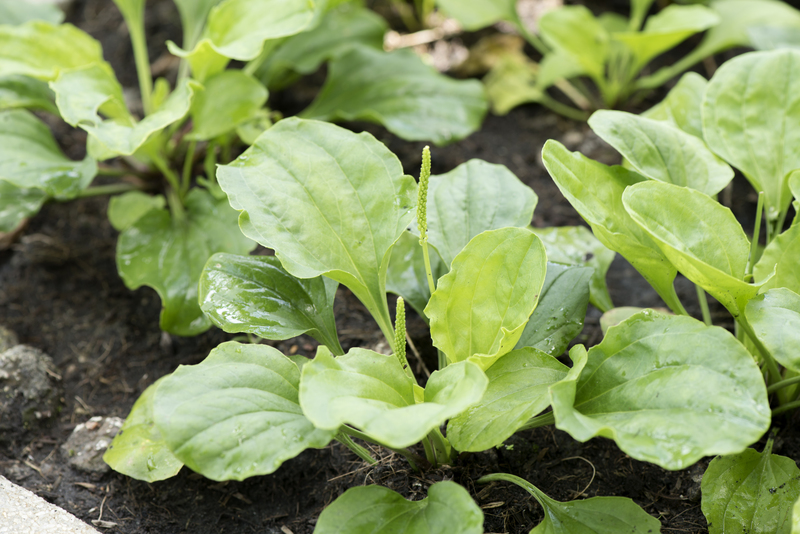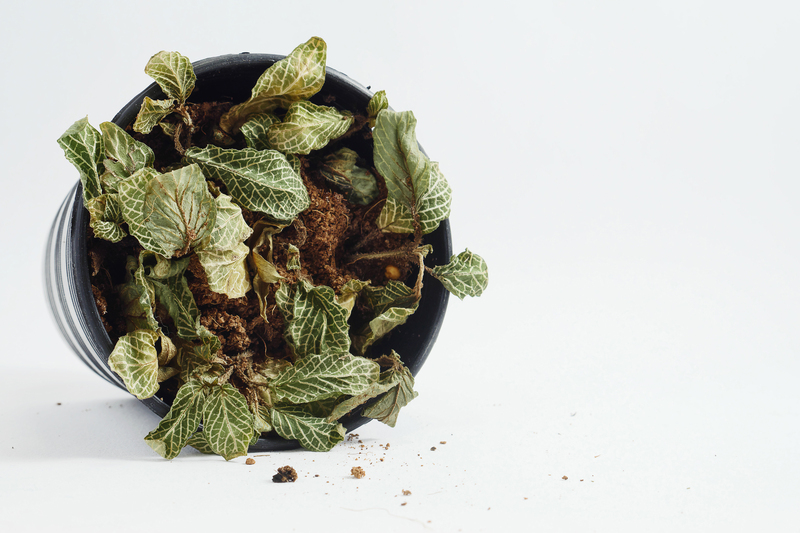Waste Conversion to Enrich Our Soil
Posted on 03/07/2025
Waste Conversion to Enrich Our Soil: A Comprehensive Guide
In today's world, the sustainable management of waste has become a crucial topic for both environmentalists and agricultural practitioners. One of the most promising solutions is waste conversion to enrich our soil. This process not only minimizes landfill usage but also transforms various organic and inorganic wastes into valuable amendments that deeply improve soil health. In this comprehensive guide, we will explore methods, benefits, and the importance of turning waste into rich, fertile soil.

What is Waste Conversion for Soil Enrichment?
Waste conversion to soil enrichment is the systematic process of transforming waste materials, particularly organic waste, into nutrient-rich substances that enhance the productivity, structure, and overall quality of the soil. This includes composting, vermicomposting, and advanced approaches that incorporate biochar and other innovative solutions.
Types of Waste that Can Be Converted
- Kitchen scraps: Fruit and vegetable peels, coffee grounds, eggshells.
- Yard waste: Grass clippings, leaves, branches.
- Agricultural residues: Crop stubble, husks, manure.
- Paper products: Untreated paper, cardboard.
- Industrial organic waste: Breweries, food processing byproducts.
Why Focus on Soil Enrichment through Waste Conversion?
*Modern agriculture and urban practices have depleted natural soil fertility.* Waste conversion not only diverts materials from landfills but also restores organic matter and essential nutrients back into the ecosystem, promoting a healthy and sustainable environment.
The Science Behind Waste Conversion to Enrich Soil
Soil health is closely linked to the presence of organic matter, microbes, and nutrients that support plant life. When organic waste breaks down, it releases essential elements like nitrogen, phosphorus, and potassium, alongside micronutrients that are vital for plant growth. Using techniques such as composting, we can accelerate the natural decomposition process, ensuring that waste is efficiently converted into usable soil amendments.
Components of a Fertile Soil
- Organic matter - Key for soil structure and moisture retention.
- Microbial activity - Beneficial microorganisms break down nutrients for plant uptake.
- Mineral content - Elements like potassium and phosphorus are essential for plant health.
- Good drainage and aeration - Ensured by a balanced soil texture and composition.
Popular Waste-to-Soil Conversion Methods
1. Composting: The Classic Method
Composting is the most widely recognized waste conversion method. It involves collecting organic materials and allowing them to decompose under controlled conditions. Microbes, heat, and time break down waste, resulting in a dark, crumbly substance that instantly boosts soil fertility.
- Hot Composting: Achieves rapid decomposition through high temperatures.
- Cold Composting: Slower, but requires less management.
- Tumbler Composting: Uses rotating bins for aeration and ease of use.
Benefits: Reduced waste volume, improved soil structure, enhanced water retention, and increased nutrient availability.
2. Vermicomposting: Harnessing the Power of Earthworms
Vermicomposting uses specific types of earthworms, such as Red Wigglers, to accelerate waste breakdown. The worms eat organic material and excrete castings that are extremely rich in nutrients, beneficial microbes, and growth-promoting substances.
Advantages of vermicomposting:
- Produces high-quality fertilizer quickly.
- Suitable for indoor and outdoor use.
- Reduces greenhouse gas emissions.
3. Biochar: Carbon-Rich Soil Amendment
Biochar is a highly stable form of carbon, created by burning organic waste in the absence of oxygen (a process called pyrolysis). It locks nutrients in the soil, supports microbial communities, and reduces soil acidity.
Key Benefits:
- Increases soil fertility for decades.
- Enhances soil structure and water retention.
- Acts as a carbon sink, mitigating climate change.
4. Anaerobic Digestion
This method involves the breakdown of organic waste in the absence of oxygen, resulting in biogas and digestate. While biogas can be used for renewable energy, digestate is an excellent soil enhancer--improving crop yield and reinforcing soil health.
Benefits of Waste Conversion for Soil Health
The advantages of enriching soil via waste conversion extend beyond mere waste minimization. Here are some critical benefits:
- Environmental Protection: Diverts waste from landfills, reducing methane emissions.
- Resource Efficiency: Turns potential pollutants into valuable resources.
- Improved Crop Yields: Nutrient-rich soil amendments foster healthier, more productive plants.
- Cost Savings: Reduces the need for synthetic fertilizers and decreases landfill hauling costs.
- Sustainability: Supports a closed-loop system, where waste is recycled within the ecosystem.
How to Start Waste-to-Soil Initiatives at Home
You can contribute to waste conversion for soil enrichment easily from your household. Here's a practical, step-by-step guide:
Getting Started with Home Composting
- Choose a composting method (pile, bin, tumbler, or vermicomposting).
- Gather appropriate materials--balance "greens" (nitrogen-rich) like kitchen scraps with "browns" (carbon-rich) like dried leaves.
- Layer the materials, keeping them moist but not soggy.
- Regularly aerate to facilitate oxygen flow.
- Wait several months; when material turns dark and crumbly, use it in your garden!
Tips for Success
- Do not compost meat, dairy, or heavily processed foods to avoid pests.
- Chop large materials to accelerate decomposition.
- Maintain proper moisture and regular aeration for optimal results.
Industrial and Community Waste-to-Soil Projects
Waste conversion technologies are not limited to homes. Community gardens, farms, and municipalities are implementing large-scale composting and waste conversion facilities. These projects often include collection programs, centralized processing, and the distribution of finished compost to local farmers and gardeners.
- Municipal Composting: Citywide programs for yard and food waste.
- Farm-Based Initiatives: Using crop residues and manure for on-site soil enrichment.
- Zero-Waste Communities: Local policies that incentivize recycling and soil enrichment.
Challenges and Solutions
While the promise of waste-to-soil conversion is substantial, there are challenges to overcome:
- Contamination of waste streams - Sorting and community education are essential.
- Odor and pests - Proper management, covering, and aeration can minimize issues.
- Infrastructure costs - Government grants and public-private partnerships can bridge financial gaps.
Innovative Trends in Waste Conversion for Soil
The field of waste conversion for soil improvement is rapidly evolving thanks to advances in technology and environmental awareness:
- Smart composting systems with temperature and moisture monitoring.
- Integration with urban farming projects for localized food production and waste recycling.
- Use of biochar and digestate from biogas plants in commercial agriculture.
- Mobile composting units for remote and underserved communities.
Best Practices for Maximizing Waste Conversion Impact
To reap the full rewards of converting waste into soil enrichment, follow these best practices:
- Consistently separate organic waste from recyclables and trash.
- Promote community education to increase participation and reduce contamination.
- Regularly maintain and monitor composting systems for efficiency and safety.
- Test the finished product for pathogens and contaminants before soil application.
- Encourage public-private partnerships for technology access and scale-up.
Environmental Impact of Waste-to-Soil Conversion
Waste conversion processes dramatically benefit the environment. By diverting waste from traditional disposal methods, we decrease the risk of groundwater contamination, reduce greenhouse gas emissions, and halt harmful runoff into waterways. Moreover, converting waste into high-quality soil amendments decreases the need for chemical fertilizers that can disrupt local ecosystems.
Every ton of organic waste redirected from landfills reduces methane emissions--a potent greenhouse gas--and creates enough compost to enrich hundreds of square meters of agricultural land.
How Waste Conversion Supports Sustainable Agriculture
Sustainable agriculture is a critical goal as the global population rises and land resources strain. Waste conversion not only recycles nutrients but also increases soil organic content and improves tilth, enabling farms to be more resilient against droughts, pests, and changing climate conditions.
- Reduces dependence on synthetic inputs.
- Improves soil biodiversity and natural pest resistance.
- Promotes regenerative farming practices.
- Enhances nutrient cycling and carbon sequestration.

Waste-to-Soil Conversion: Future Prospects
As our world continues to urbanize, the demand for efficient waste management and soil restoration techniques will only grow. Upcoming innovations may include more efficient biotechnologies, AI-managed composting systems, and expanded municipal efforts. The successful integration of waste conversion systems into our communities stands to benefit not just agriculture, but urban landscapes, food security, and the global environment.
Conclusion: Turning Waste into Wealth for Our Soil
Converting waste to enrich our soil is an achievable, practical, and essential strategy for future-proofing our food systems and protecting the planet. By adopting these practices at home, in our communities, and on an industrial scale, we can ensure robust, healthy soils that foster abundant harvests and environmental balance. Start small or think big--every action taken towards waste-to-soil conversion is a step toward a greener, more sustainable world.
- Empower your household to compost and support municipal waste reduction initiatives.
- Advocate for zero-waste practices in your workplace, school, or neighborhood.
- Support sustainable agriculture by purchasing from farmers who use organic and waste-conversion-based soil amendments.
Together, we can transform our waste streams into a rich, fertile legacy for future generations.

